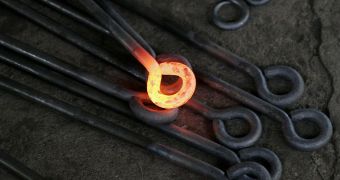At this point, more than half the energy being produced in the world is wasted as heat by automobiles, vehicles, factories, power plants and just about everything that uses or produces electricity. Researchers at the Oregon State University have developed a mechanism to harvest this wasted energy.
The Oregon State team says that its new technology is capable of harvesting residual heat being released by ineffective electricity production or consumption methods. As such, half of the world's energy is up for grabs in terms of recycling.
Many research teams around the world are working towards developing devices capable of recapturing this waster energy, either at a small level (the brakes on a car, for example) or at a large scale, such as the smokestack of a fossil fuel-powered plant.
Details of the innovation were published in the latest issue of the professional journal Applied Thermal Engineering, the team reports. The prototype is meant to showcase the capabilities this method has.
“This could become a very important new energy source and way to improve energy efficiency. The prototype shows that these systems work as well as we expected they would,” says Hailei Wang.
The expert holds an appointment as a research associate at the Oregon State School of Mechanical, Industrial and Manufacturing Engineering, Science Blog reports.
He explains that as little as 40 percent of the energy being produced in electrical power plants is converted to actual electricity. This percentage is achieved only by the most advanced installation. Conversion efficiency for older technologies is even lower (25 to 40 percent).
“This technology would be especially useful if there’s a need to have cooling systems where heat is being wasted,” Wang explains. The approach is called the thermally activated cooling system.
“That’s one reason the research has been supported by the Department of Defense, because they see it being used to provide needed air conditioning for electronics and other purposes when they are using generators in the field,” the team leader goes on to say.
In tests the Oregon State team put together, more than 80 percent of every kilowatt of waste heat was successfully converted into a kilowatt of cooling capability. This is twice the capability of the most advanced power plants today.
“There continues to be significant potential for reducing energy consumption and greenhouse gas emission by improving overall energy efficiency for various energy systems,” the research paper reads.
“One route toward satisfying both paths is to develop technology able to recover waste heat that would be otherwise rejected to the atmosphere without usage,” the team writes.

 14 DAY TRIAL //
14 DAY TRIAL //